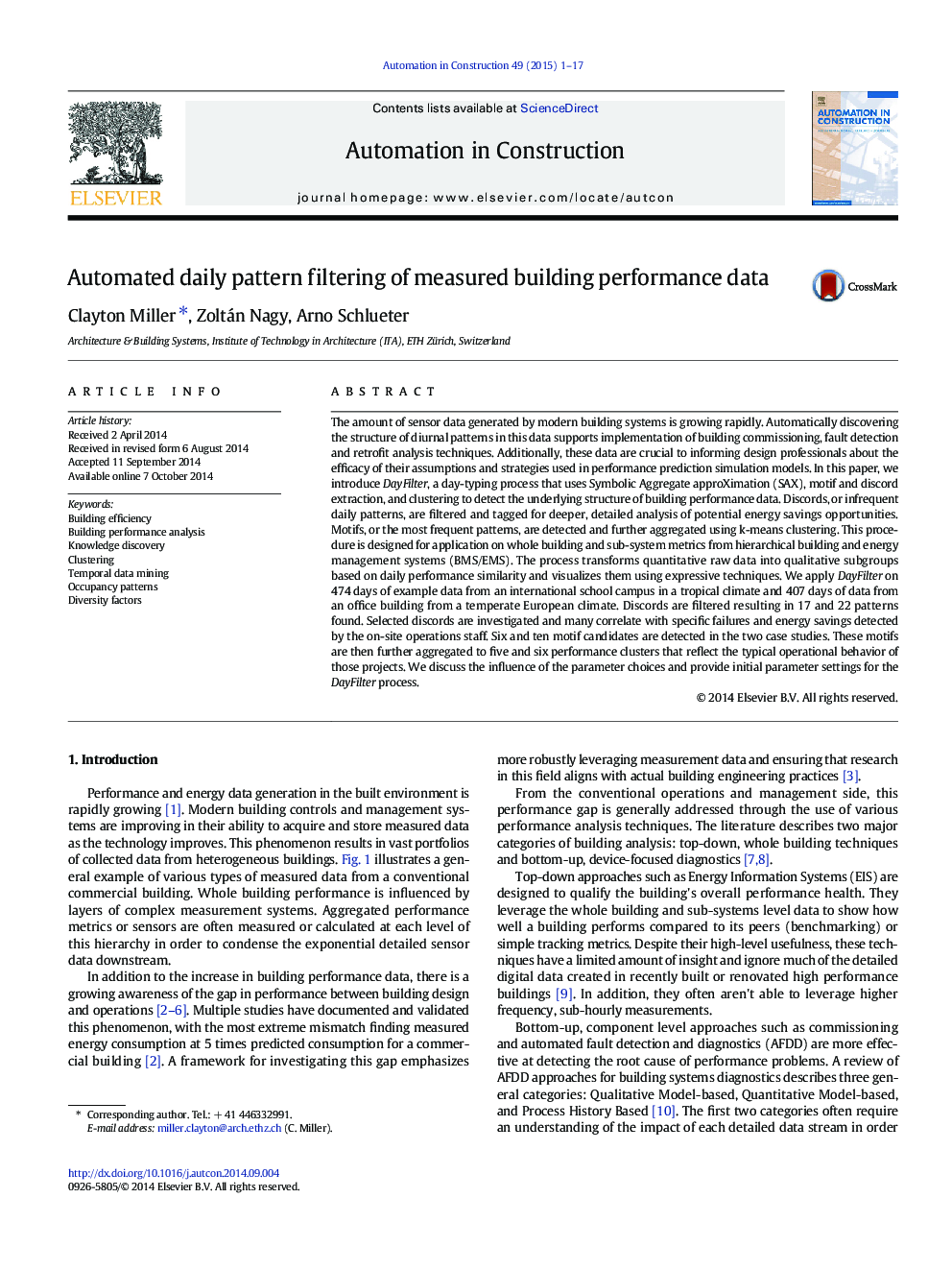| Article ID | Journal | Published Year | Pages | File Type |
|---|---|---|---|---|
| 246503 | Automation in Construction | 2015 | 17 Pages |
•A temporal data mining process for daily building performance data is proposed.•The process enables more efficient characterization of building performance data.•The process is implemented on two large, measured datasets from buildings.•Motif and discord patterns are detected in each dataset.•Selection of algorithm input parameters is discussed.
The amount of sensor data generated by modern building systems is growing rapidly. Automatically discovering the structure of diurnal patterns in this data supports implementation of building commissioning, fault detection and retrofit analysis techniques. Additionally, these data are crucial to informing design professionals about the efficacy of their assumptions and strategies used in performance prediction simulation models. In this paper, we introduce DayFilter, a day-typing process that uses Symbolic Aggregate approXimation (SAX), motif and discord extraction, and clustering to detect the underlying structure of building performance data. Discords, or infrequent daily patterns, are filtered and tagged for deeper, detailed analysis of potential energy savings opportunities. Motifs, or the most frequent patterns, are detected and further aggregated using k-means clustering. This procedure is designed for application on whole building and sub-system metrics from hierarchical building and energy management systems (BMS/EMS). The process transforms quantitative raw data into qualitative subgroups based on daily performance similarity and visualizes them using expressive techniques. We apply DayFilter on 474 days of example data from an international school campus in a tropical climate and 407 days of data from an office building from a temperate European climate. Discords are filtered resulting in 17 and 22 patterns found. Selected discords are investigated and many correlate with specific failures and energy savings detected by the on-site operations staff. Six and ten motif candidates are detected in the two case studies. These motifs are then further aggregated to five and six performance clusters that reflect the typical operational behavior of those projects. We discuss the influence of the parameter choices and provide initial parameter settings for the DayFilter process.
